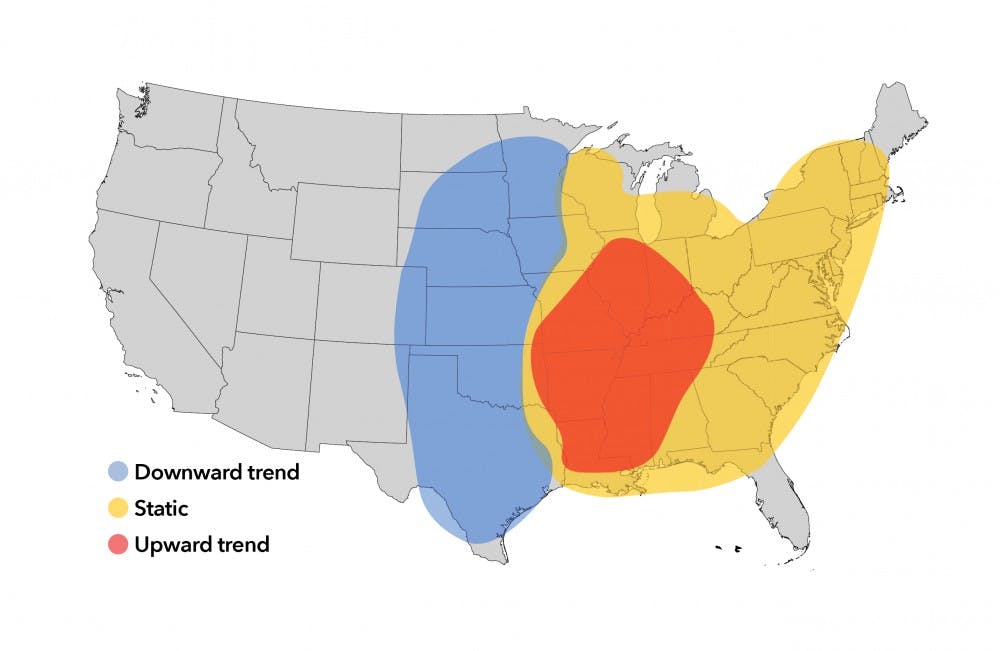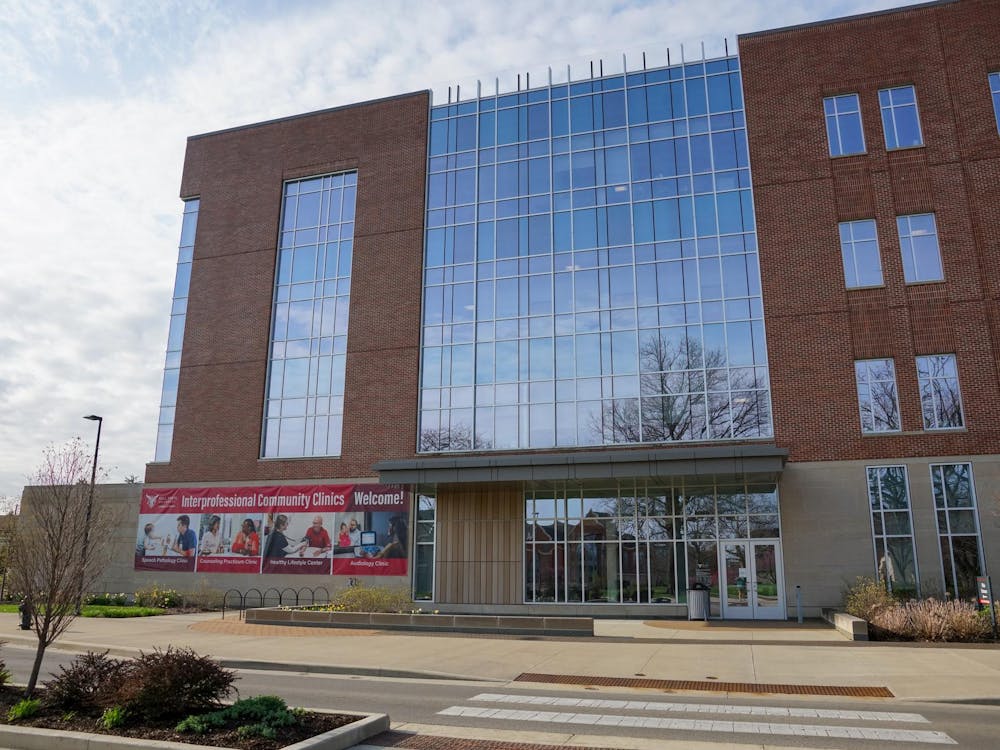Indiana may soon face an increased risk of tornadoes, a new study by the Nature Partners Journal (NJP) Climate and Atmospheric Science reports.
The study, published earlier this month, which aggregated 40 years of tornado data. It found there is an increasing trend in the Southeast United States due to a greater propensity for tornado outbreaks east of the Mississippi River.
This means states like Illinois, Kentucky, Tennessee, Missouri, Mississippi, Alabama, Arkansas and Indiana face a higher risk of tornadoes.
Tornadoes are not rare in Indiana as tornado season, which falls between April and June, usually averages seven days where tornado outbreaks, per the National Weather Service’s findings from 2000-09.
“In Indiana, your best chances of tornadoes are as you go south and west, but Delaware County gets a tornado typically every few years. In Muncie or Delaware County you can probably expect three or four tornadoes in a decade, but most of those tornados are going to be fairly weak,” said meteorology professor David Call.
A study from the National Weather Service states 24 tornadoes happen annually in Indiana with data from 1985-2014.
The State of Indiana’s Tornado Assessment cites the single deadliest tornado outbreak was a series of 10 tornadoes that occurred April 11, 1965, which killed 137 people across 32 counties. Indiana averaged seven deaths annually between 1950 and 1995, according to the assessment.
Since 1954 — the earliest year the National Weather Service began collecting tornado data in Delaware County — the county has not lost a single life to tornadoes, though their frequency in the area has accelerated significantly over the last two decades. The cost of tornadoes has also been relatively low, costing around $4.4 million in damages since 1954.
With Tornado Alley expanding, Call said predicting tornadoes may become more challenging.
“It’s clear that the distribution [of tornadoes] will change, but it’s a little less clear how it will change,” Call said.
Jason Rogers, director of Delaware County Emergency Services, said in an email that though a tornado would be a very serious problem, his department has plenty of resources in place to handle an emergency of that scale.
“We currently have plans and resources to draw from should a significant storm hit us. They include shelter, food, transportation, medical, debris removal, and many other critical services,” Rogers said.
The destruction caused from the 2012 Henryville tornadoes was a worst case scenario for potential destruction because it took several years of recovery to repair, Rogers said.
Insurance plays a significant role in how much the government can aid in relief efforts.
“Uninsured structures can take years to be fixed or demolition to take place and this is only if a state or federal disaster declaration is filed and FEMA awards recovery monies. In the case of last years storms we were not eligible for FEMA or State recovery because we didn’t meet the uninsured threshold,” Rogers said.
Contact John Lynch with comments at jplynch@bsu.edu.





